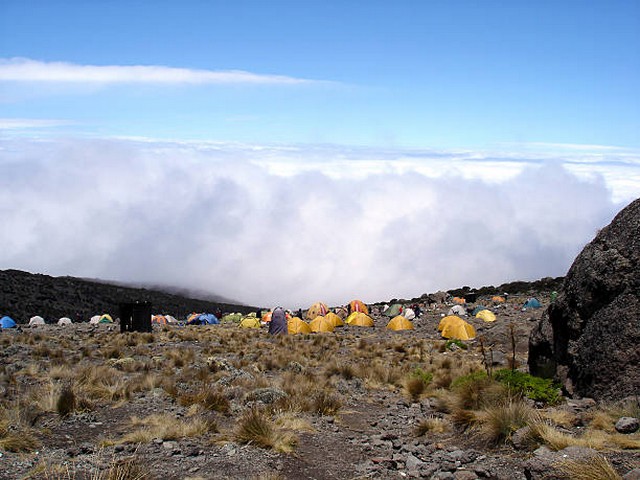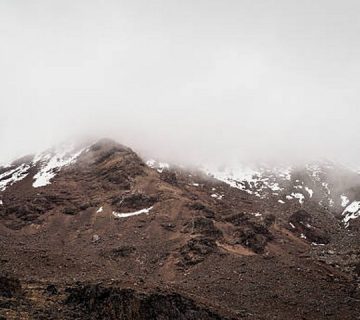Mastering the Heights: Kilimanjaro Trek Acclimatisation Tips from KCTE
Standing as a beacon of adventure, Mount Kilimanjaro calls to the hearts of trekkers worldwide, promising an experience as breathtaking as the view from its summit. But the path to Uhuru Peak isn’t just a physical challenge; it’s a journey that requires careful preparation, particularly when it comes to acclimatisation. At Kilimanjaro Centre for Trekking and Ecotourism (KCTE), we’re not just experts in guiding adventurers to the summit—we’re your partners in ensuring a safe, memorable, and successful climb. Below, discover our top Kilimanjaro trek acclimatisation tips, crafted from years of experience and countless successful ascents.
Why Acclimatisation is Key on Kilimanjaro
Acclimatisation is the process of allowing your body to adjust to higher altitudes and decreased oxygen levels. On Kilimanjaro, failing to properly acclimatise can lead not only to altitude sickness but also to a decreased chance of reaching the summit. Understanding the importance of this process and following expert advice can significantly enhance your trekking experience.
Choosing the Right Route for Better Acclimatisation
The Lemosho Route: A Slow and Steady Ascent
The Lemosho route is famed for its beauty and its effectiveness in helping trekkers acclimatise. This route takes you through some of Kilimanjaro’s most stunning landscapes, from lush rainforests to alpine deserts, while providing a gradual altitude increase.
The Machame Route: The Whiskey Route
Affectionately known as the “Whiskey” route, Machame offers a slightly steeper ascent compared to Lemosho but still allows ample time to acclimatise. It’s perfect for those who may have a bit of high-altitude experience under their belts.
Choosing a route with a longer itinerary greatly enhances your acclimatisation process and increases your chances of a successful summit. At KCTE, we recommend routes that optimally balance beauty and acclimatisation.
Pre-Trek Preparation: Getting Ready for the Altitude
Physical Fitness: Building Your Base
While physical fitness won’t prevent altitude sickness, being in good shape will make your trek less strenuous, which in turn helps your body focus on adjusting to the altitude. Focus on cardiovascular exercises, strength training, and endurance workouts months before your climb.
Diet and Hydration: Fueling for Success
Hydration plays a crucial role in acclimatisation. Drinking plenty of water helps mitigate the symptoms of altitude sickness. Additionally, maintaining a balanced diet rich in carbohydrates can provide the energy needed for the trek.
Mental Preparation: Setting Realistic Expectations
Mentally preparing for Kilimanjaro is just as important as physical preparation. Understand the challenges ahead and set realistic goals. Remember, climbing Kilimanjaro is not a race; it’s an experience to be savored.
On-Trek Strategies: Maximizing Acclimatisation
Pole Pole: The Swahili Secret to Success
“Pole pole” (slowly, slowly in Swahili) is more than a phrase—it’s a mantra on the mountain. Ascending slowly helps your body adjust to high altitudes and reduces the risk of altitude sickness.
Proper Sleep: Rest for Recovery
Getting adequate rest during your trek is essential. Sleep helps your body recover and regenerate, vital for a successful acclimatisation process.
Listen to Your Body: Knowing the Signs of Altitude Sickness
Recognizing the early signs of altitude sickness (headache, nausea, dizziness) and taking appropriate action is critical. Our KCTE guides are trained to identify these symptoms and will help make necessary adjustments to your ascent schedule if needed.
After the Climb: Post-Trek Recovery
Rehydration and Rest
After your descent, focus on rehydrating and resting. Allow your body to recover from the exertion of the climb and gradually reintegrate into lower altitudes.
Celebrate Your Achievement
Reaching the summit of Kilimanjaro is a monumental achievement. Celebrate this milestone and reflect on the journey, the challenges overcome, and the memories made.
Why Choose KCTE for Your Kilimanjaro Adventure?
At Kilimanjaro Centre for Trekking and Ecotourism (KCTE), we pride ourselves on our expert knowledge, experienced guides, and commitment to safety and ecotourism. We understand that climbing Kilimanjaro is a dream for many, and we’re dedicated to making that dream a safe and exhilarating reality. Our carefully crafted itineraries are designed to optimize your acclimatisation process, ensuring you have the best possible chance to stand on the Roof of Africa.
FAQ: Everything You Need to Know About Acclimatising on Kilimanjaro
Q: How long does it take to acclimatise on Kilimanjaro?
A: Typically, it depends on the route, but we recommend a 7-9 day climb for optimal acclimatisation.
Q: Can I take medication to help with acclimatisation?
A: Yes, medications like Acetazolamide can aid in acclimatisation. However, consult with a healthcare provider before your trek.
Q: What is the best time of year to climb Kilimanjaro for optimal weather conditions?
A: The best times are during the dry seasons, from late June to October and from late December to March.
Embark on your Kilimanjaro journey with the experts at KCTE and experience the thrill of conquering one of the world’s most iconic peaks. Remember, the right preparation and the right partner can turn this challenging trek into an unforgettable adventure. Contact us today to plan your climb and take the first step towards the roof of Africa with Kilimanjaro Centre for Trekking and Ecotourism (KCTE). Your adventure awaits!




